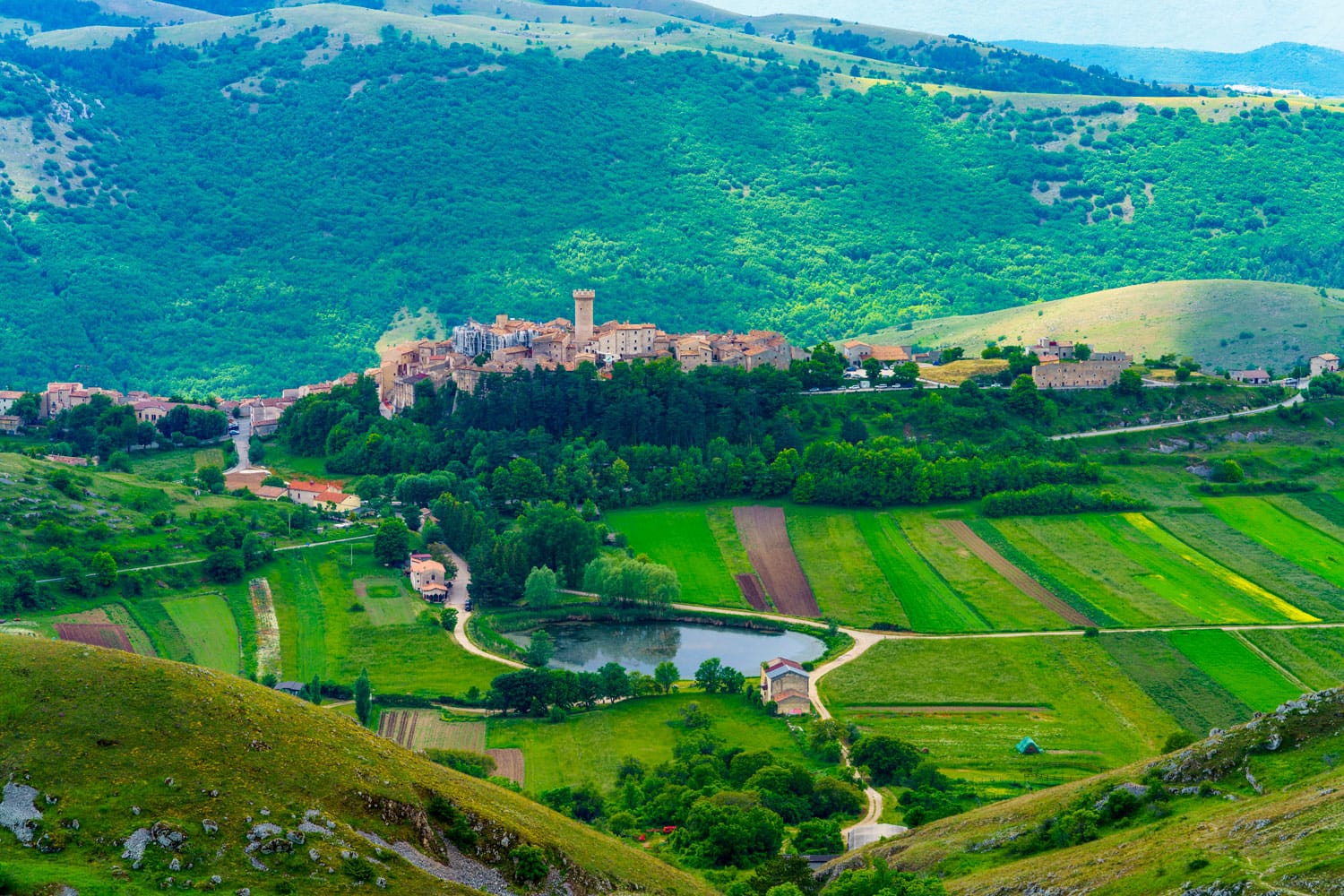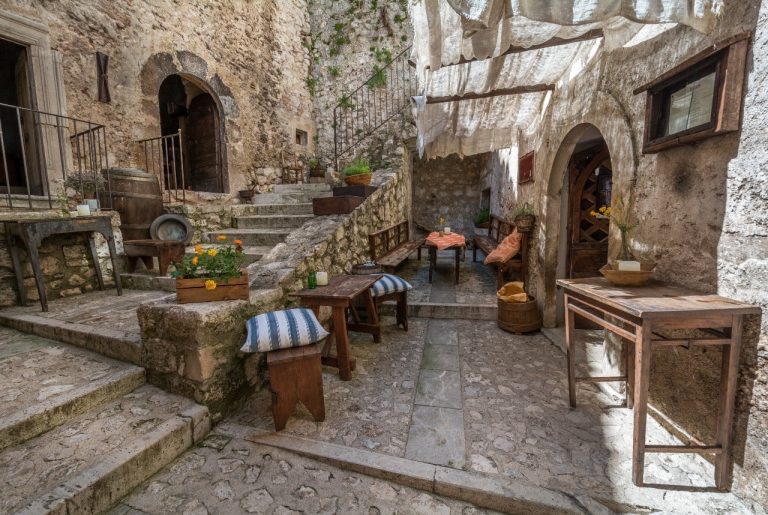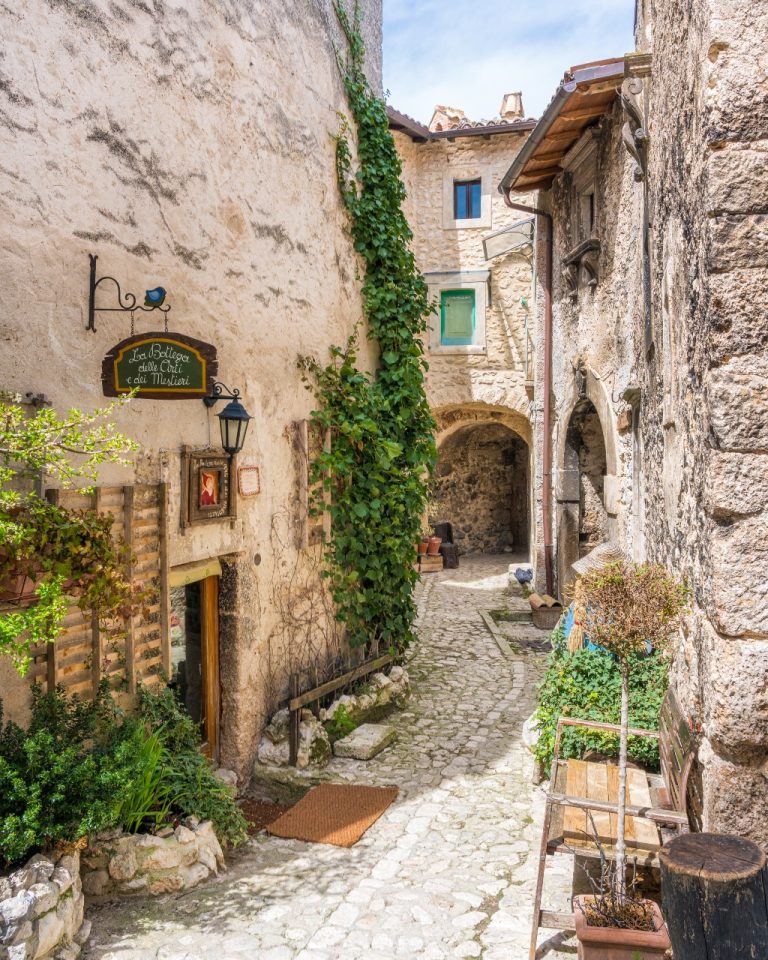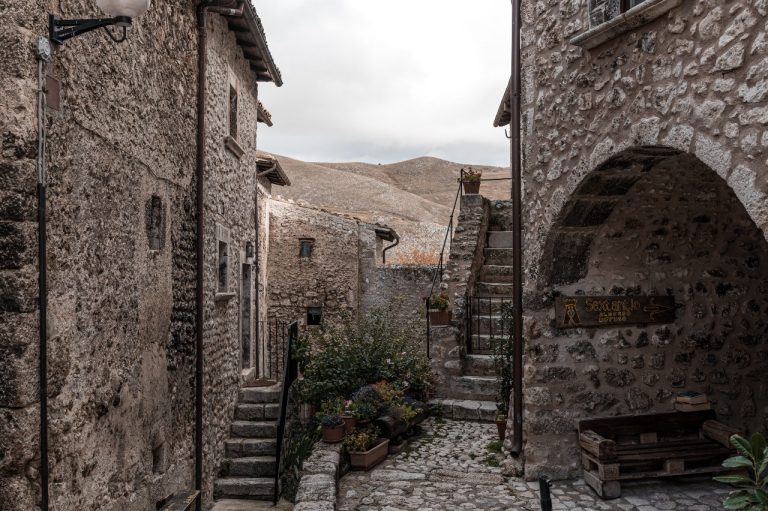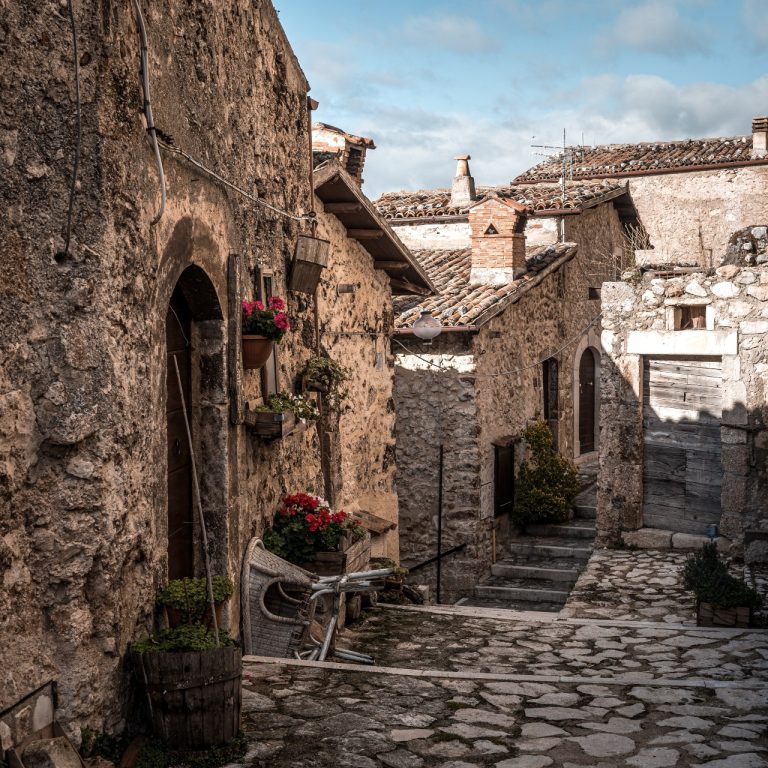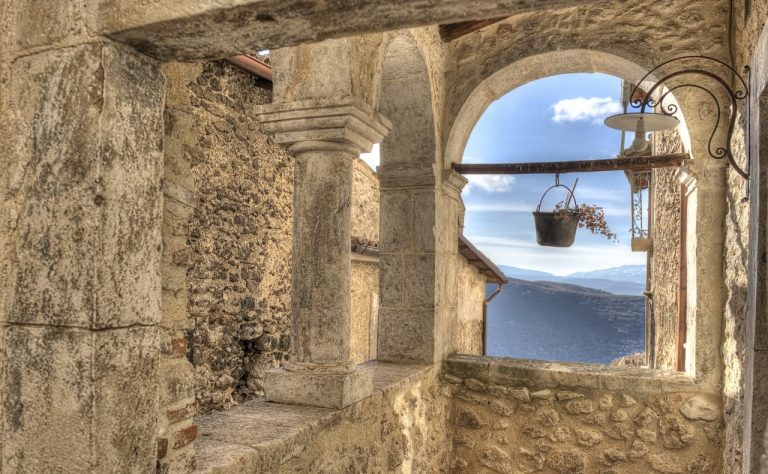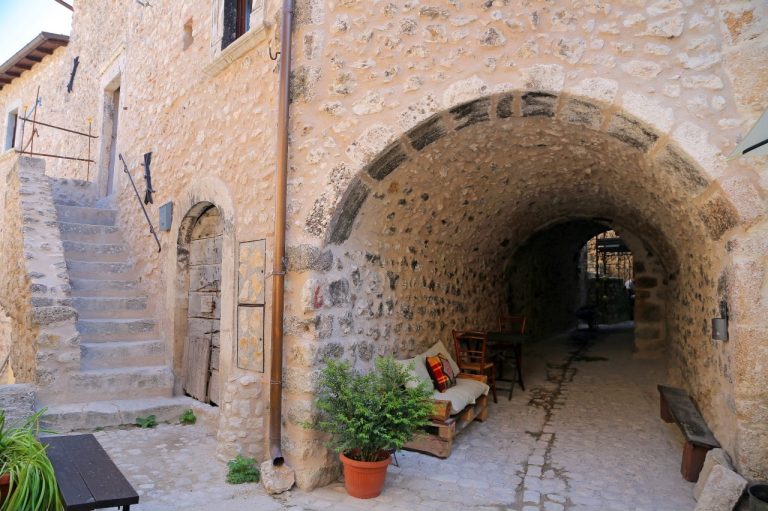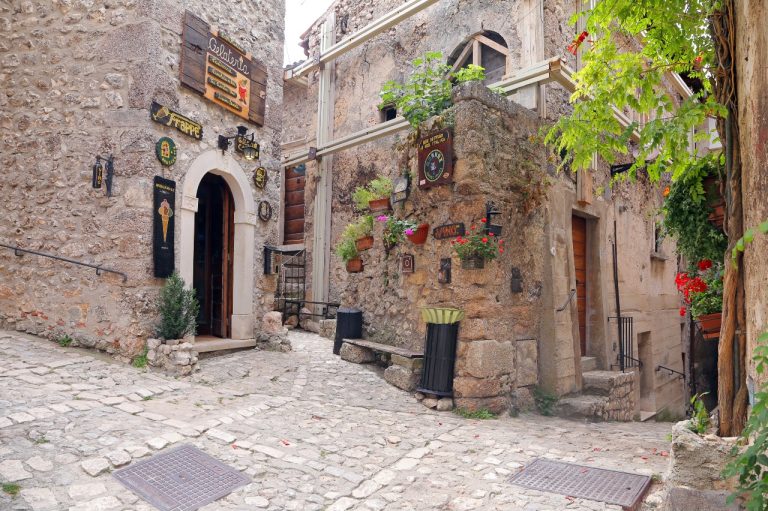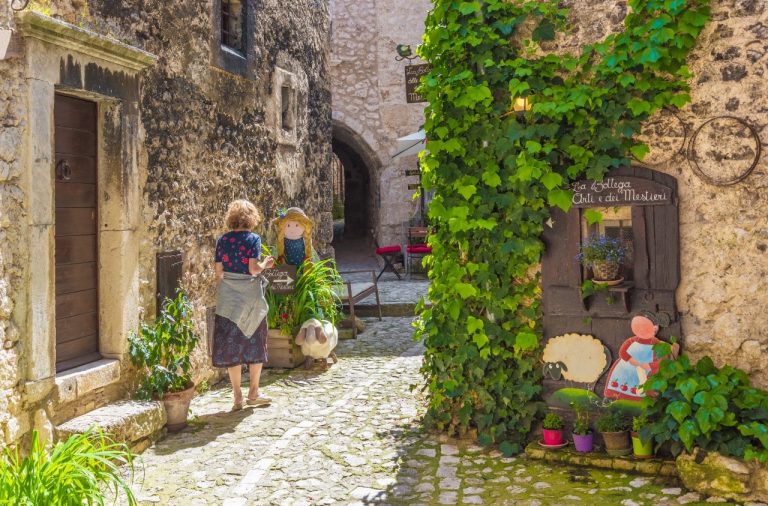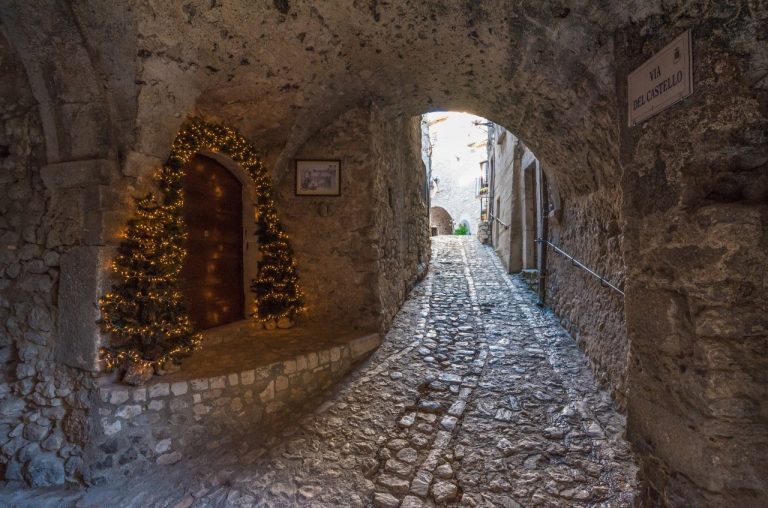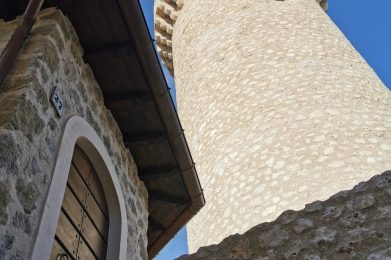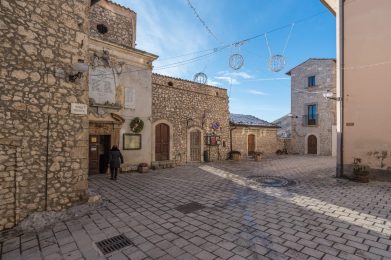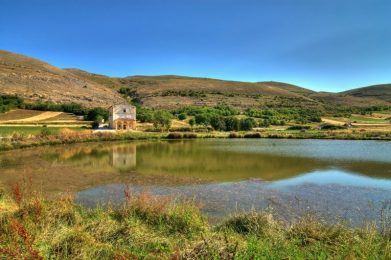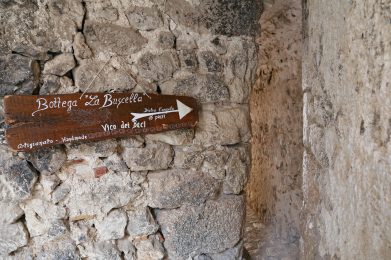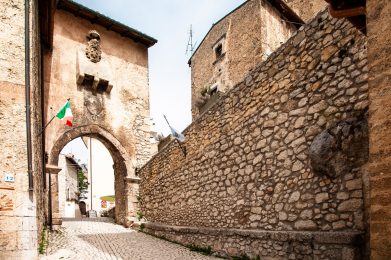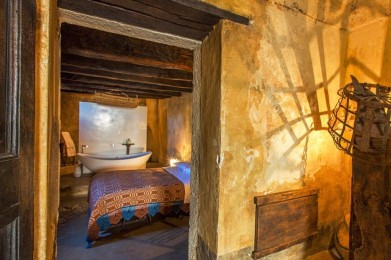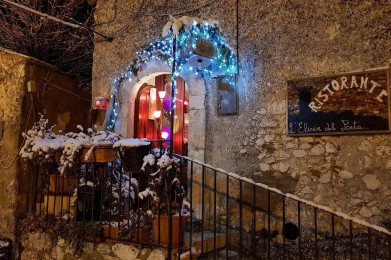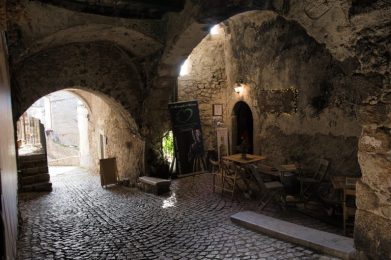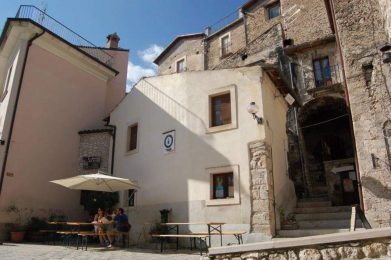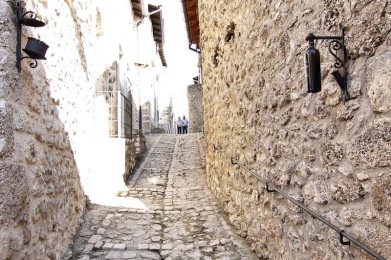There are numerous historical, environmental and cultural attractions in this locality that will take one on a journey of discovery to a bygone world. At every turn, enchanted landscapes and fairy scenery will unfold just as if you had returned to the Middle Ages.
Medieval architecture in Santo Stefano di Sessanio
The first settlement in the area seems to date back to 1239 when the Convent of St. Vincent stood. Successive monastic orders gave a strong impetus to the agricultural and thus economic development of the area. The first fortifications were necessary in order to defend against outside attacks and to protect the fruit of hard work in the countryside. The Medici Tower dates back to the Medici settlement when Baron Piccolomini's daughter ceded the barony to the Medici, who ruled until the 1700s. During the 2009 earthquake, the tower collapsed, but painstaking reconstruction work, which lasted until 2021, restored its former charm.
Santo Stefano di Sessanio, as it appears today, developed around the 14th century, constituting the center of attraction for trade and exchanges with neighboring Apulia in medieval times. One of its many curiosities concerns its shape, as it resembles an eagle's nest lovingly enveloping the houses, attached to each other as if to clasp each other in an embrace. The hamlet can be accessed through the Porta Urbica.
Walking through the streets of Borgo Santo Stefano di Sessanio is like reliving its history, admiring ancient churches and noble palaces. The Medici Chapel is located in the square of the same name and its construction dates back to the 18th century presenting a single nave. On the high altar is a niche with a statue of the Blessed Virgin of Mount Carmel. A little outside the village, near the cemetery, stands the Church of St. Stephen Martyr in which all the pomposity of the Baroque prevails but with medieval imprint. The altar of the saint, in fact, is decorated with stucco and sumptuous spandrels.
Nature envelops the village
Nature around Santo Stefano di Sessanio unfolds according to flourishing geometries. The surrounding vegetation gives that sense of peace and search for inner harmony. This is one of the reasons why lovers of peace and quiet come to this village among the most beautiful in Italy. There are many naturalistic sites as the locality lies right at the foot of the Gran Sasso. The mountains slope rapidly toward the plains in a palette of colors that are reflected in the small lake of Santo Stefano di Sessanio. Rivers, streams and other small bodies of water accompany hikes in the Gran Sasso Park. Contact with the elements of nature is unique and exclusive. There is no shortage of surprising encounters with local flora and fauna. The cat, wildcat, marten, beech marten, skunk and porcupine may cross the path of hikers walking through the woods.
The gastronomic treasures of Santo Stefano di Sessanio
Gastronomy could not miss among the search for the treasures of Santo Stefano di Sessanio. The village, thanks to its location, is still linked to ancient traditions in which the peasant culture knew how to make good use of the resources of this territory. The Santo Stefano di Sessanio lentil, for example, is a Slow Food Presidium. Crop plantings characterize the mountain terraces surrounding the village. Shepherding and animal husbandry give typical products such as lamb, sausage and salami, goat cheese and pecorino cheese. Some typical recipes to taste are sagnette with lamb sauce, curd, chickpea and chestnut soup, gnocchetti and fagioli poverelli.

